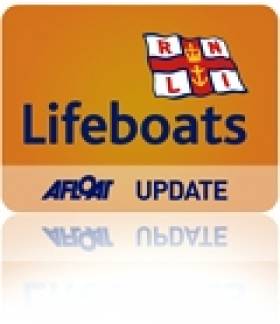Displaying items by tag: Laurence Cove
Castletownbere RNLI Lifeboat Help Injured Couple After Yacht Gets Into Difficulty Off Bere Island
#rnli – Lifeboat crew with Castletownbere RNLI launched yesterday (30 July 2014) to help a couple who had become injured when the 40 ft yacht they were sailing on, at Lawrence Cove, got into difficultly. On arriving at the scene, the lifeboat crew had to board the vessel and treat the injured woman before bringing the couple to safety at Castletownbere harbour in Cork.
The call for help was raised at 1.28pm, with the lifeboat arriving on scene fifteen minutes later. A local passenger vessel had been passing when the couple got into trouble and was able to offer assistance.
When the lifeboat came alongside the yacht, three of the volunteer lifeboat crew boarded the vessel and administered first aid to the couple. They did not wish to move the woman as she had received injuries to her back, so the lifeboat crew stayed onboard the yacht and returned with it to the shore. On arrival they were transferred to Cork University Hospital.
Commenting on the callout Castletownbere RNLI crewmember Paul Stevens said, 'Thankfully conditions were calm and we were able to reach the couple quickly. It was also fortunate to have the assistance of the local ferry when the lifeboat crew arrived and we are very grateful to them. The couple had sustained injuries when their yacht had got into difficulty and our priority was to get them back to shore as quickly and comfortably as possible. We wish them both a speedy recovery.'





























































